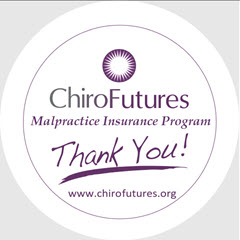RISK MANAGEMENT MINUTE – Vicarious Liability in Chiropractic Practices

In the context where a chiropractor and his business hires or rents space to an independent contractor (IC) such as a massage therapist, midwife, doula etc. and the IC is being charged in a criminal case, is being sued, or brought before a regulatory board - various legal theories can potentially hold the chiropractor and his business liable alongside the other providers. Here, we will delve into the concept of vicarious liability and explore the possible legal theories that might allow the plaintiff to sue the chiropractor and his business.
Vicarious Liability
Vicarious liability is a legal doctrine that assigns liability to an individual or entity not because they were directly responsible for the harm, but because of their relationship with the person who was directly responsible. In the typical employer-employee scenario, vicarious liability is easier to establish, but it also applies in situations involving independent contractors.
Legal Theories
1. Negligent Hiring/Retention
A plaintiff could argue that the chiropractor and her business negligently hired or retained the other provider. Under this theory, the chiropractor had a duty to hire competent and safe providers to avoid foreseeable harm to clients. If the therapist had a known history of negligent or unsafe conduct, and the chiropractor failed to perform a reasonable background check, they might be held liable for negligently hiring or retaining the therapist.
2. Respondeat Superior
Although generally applied to employer-employee relationships, in some jurisdictions and under specific circumstances, "respondeat superior" can be extended to cover relationships with independent contractors. The plaintiff would need to demonstrate that the chiropractor had a degree of control over the other provider that resembled an employer-employee relationship.
3. Ostensible Agency (Agency by Estoppel)
A plaintiff might argue that, from the perspective of a reasonable person, the other provider, such as a massage therapist, appeared to be an employee of the chiropractor. Under this theory, if the plaintiff reasonably believed that the therapist was an employee and that belief was fostered by the chiropractor's actions or representations, the chiropractor might be held liable.
4. Direct Negligence
This theory would involve showcasing that the chiropractor and his business were directly negligent, perhaps in supervision or in providing safe facilities and conditions, which contributed to the alleged harm.
5. Non-Delegable Duty
Under this doctrine, the plaintiff might argue that the chiropractor had a non-delegable duty to ensure the patient's safety — a duty that couldn't be transferred to another person (like an independent contractor). If the chiropractor neglected this duty, they could potentially be held liable.
Strategy
In pursuing a case against the chiropractor and his business, a plaintiff's legal team might seek to employ one or more of the above theories. They might gather evidence demonstrating a significant level of control over the other provider's work, negligent hiring, or a failure to adequately supervise them.
Conclusion
To succeed, the plaintiff will need to navigate the legal principles surrounding vicarious liability and demonstrate that, under one or more legal theories, the chiropractor and his business should share in the liability for the therapist's alleged actions. The outcome will heavily depend on the specific facts of the case and the relevant jurisprudence in the jurisdiction where the case is being heard.

Blogs
- The Chiropractic Cartel: A Look Back at Bias in Accreditation and its Imact on Today's Profession
- Inside Montana's Chiropractic Monopoly: ACA & MCA's Brazen Board Takeover
- Concerns Grow About Control of the NY State Chiropractic Board by the ACA - Use of X-ray in NY Under Threat
- Reproductive Health Information and Chiropractic Care: Navigating New Privacy Regulations
- Navigating Substance Use Disorder (SUD) Consent: What Chiropractors Need to Know













